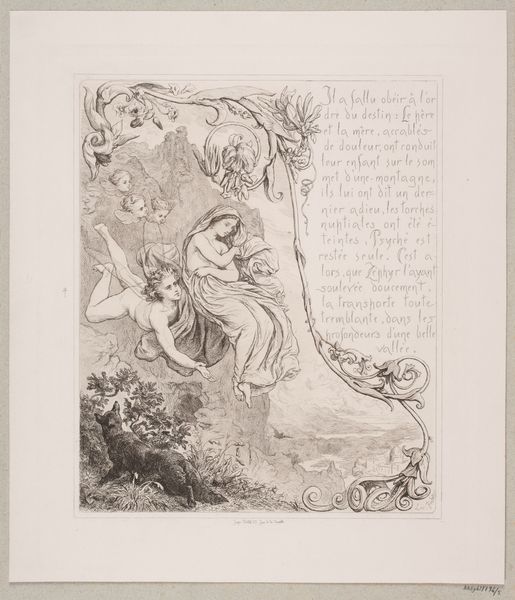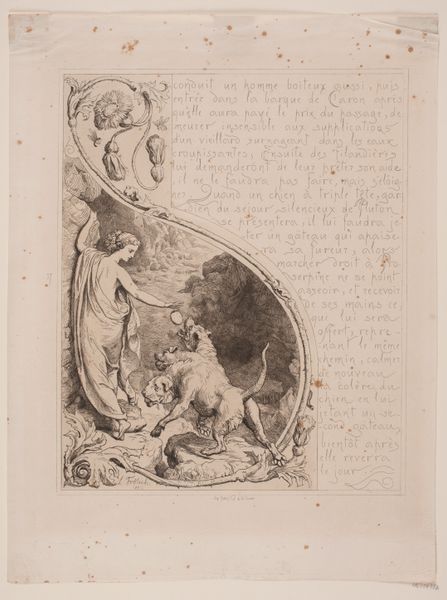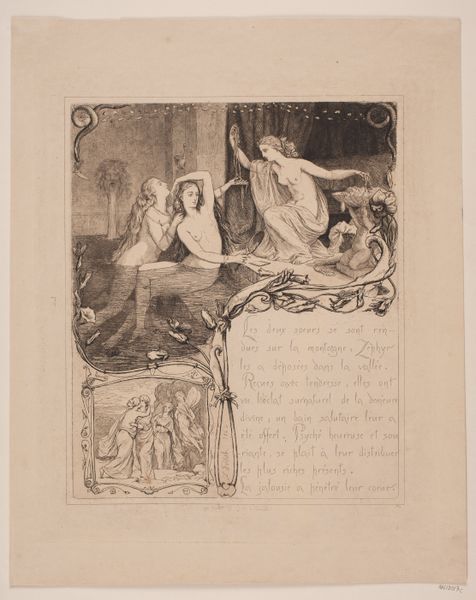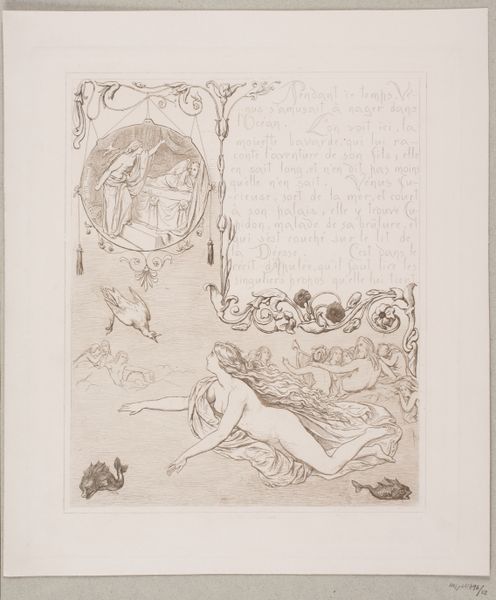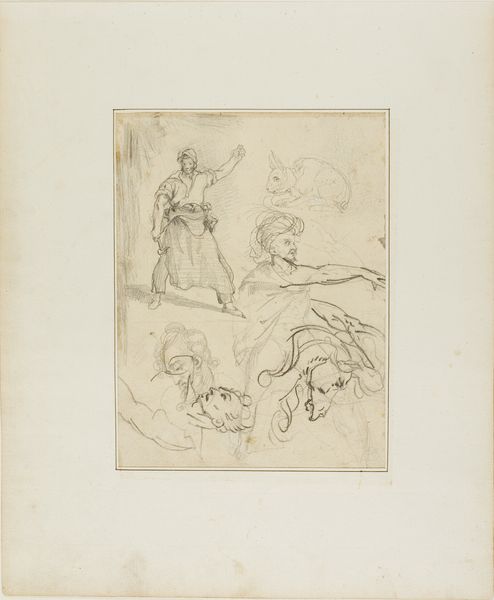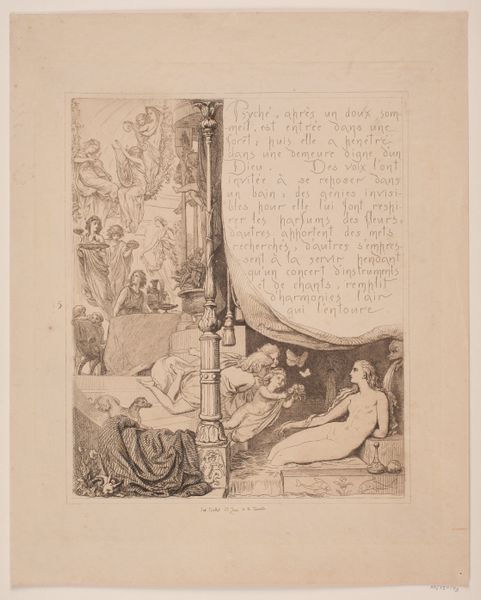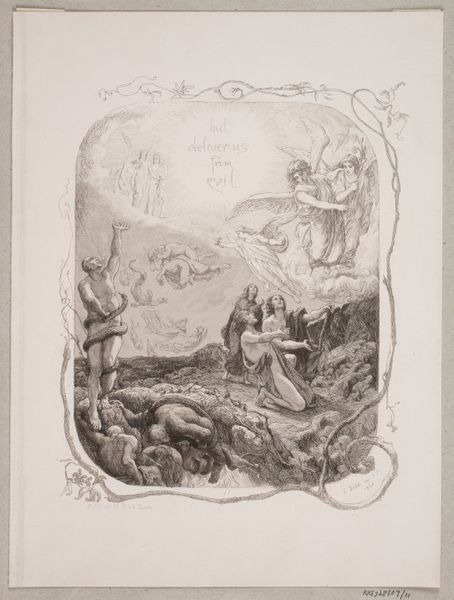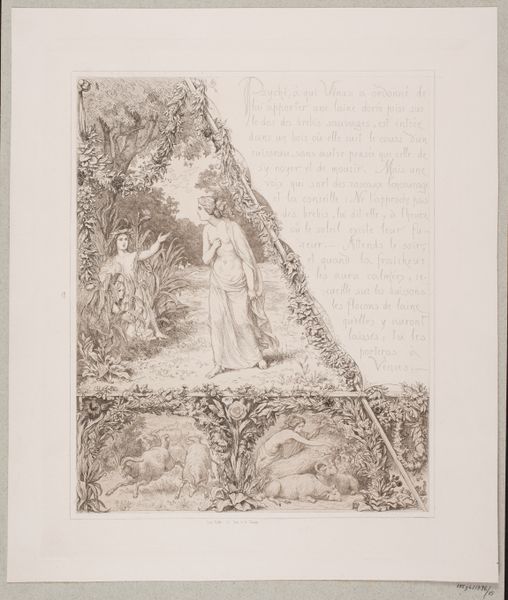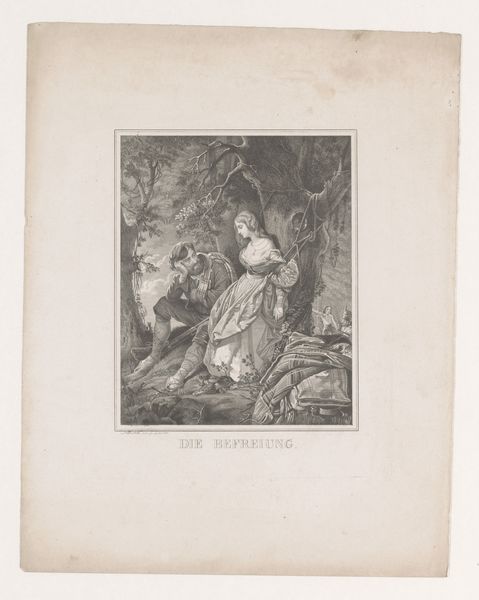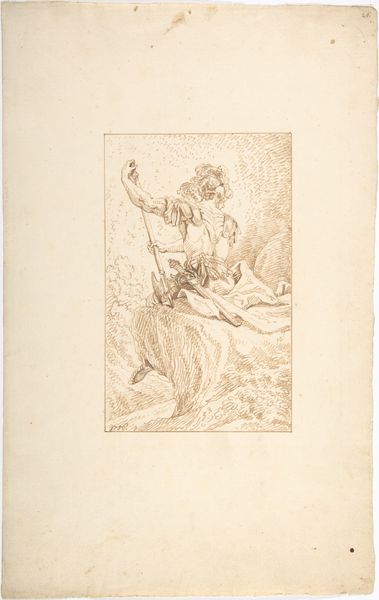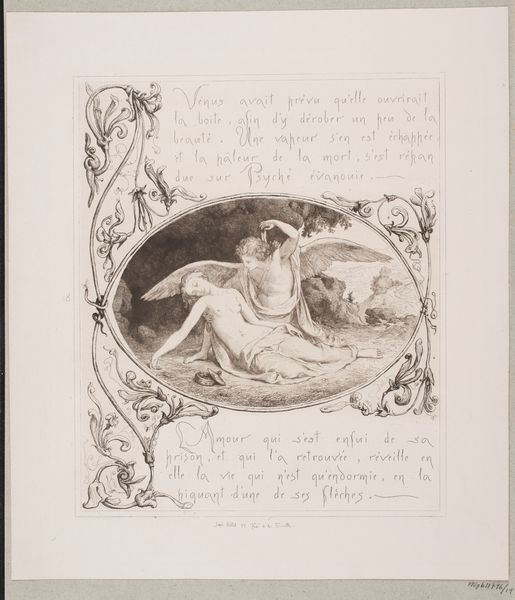
print, engraving
#
toned paper
#
light pencil work
# print
#
pencil sketch
#
personal sketchbook
#
ink drawing experimentation
#
pen-ink sketch
#
sketchbook drawing
#
watercolour illustration
#
sketchbook art
#
engraving
#
watercolor
Dimensions: 394 mm (height) x 297 mm (width) (bladmaal)
Editor: Here we have Lorenz Frølich's "Illustration nr. 4 til 'L`Amour et Psyché'," created in 1862. It appears to be an engraving, possibly with watercolor, on toned paper. The wispy lines create a dreamy, ethereal atmosphere. What strikes you about this piece? Curator: Well, considering this engraving as a product of its time, I'm immediately drawn to the means of production. Engravings allowed for reproduction and wider circulation of imagery. Who was the intended audience and how did this access impact social views of "L`Amour et Psyché?" Editor: That's interesting. I hadn't considered the printmaking aspect so deeply. So, you are suggesting the material process influenced consumption, and that informs our understanding? Curator: Precisely. The very act of translating a story into a repeatable image via engraving alters its reception. The lines are delicate, the tonal variations are subtle - decisions made through craft. Think about the labor involved, the skill demanded. Do these material qualities amplify certain aspects of the myth for a 19th-century viewer? Editor: Possibly a sense of idealized romance, or perhaps the drama of the narrative is lessened by the delicacy of the printmaking? The material almost works against the story. Curator: Good point. This contrast might encourage reflection, prompting questions about the nature of love and fate, mediated through the artist’s choices of medium and technique. Editor: It definitely gives me a new way to appreciate prints, seeing them less as copies and more as material interpretations of a story. Curator: Indeed! This engraving provides fertile ground for examining the interplay between narrative, materiality, and societal reception, and, conversely, consumerism within art. Editor: Thanks, I've really learned to look at it from the point of view of production and its consequences.
Comments
No comments
Be the first to comment and join the conversation on the ultimate creative platform.
